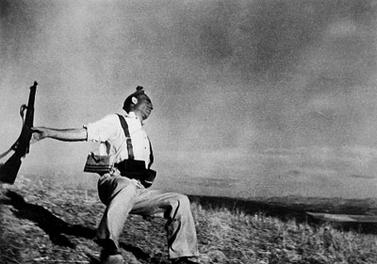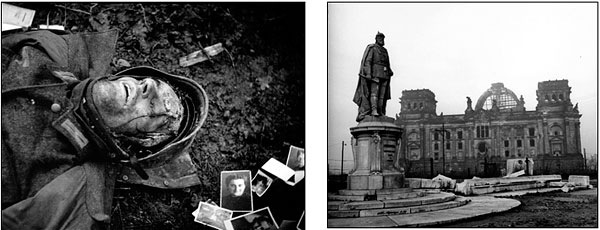When photo journalism reached the front lines of combat, it introduced to the world the horrific and brutal truth of war, photos the likes of which the world had never seen. First introduced in the 19th century, war photo journalism made a real impact during the Spanish civil war and world war II.
possibly the most celebrated war photographer was Robert Capa, a photo journalist for life magazine was sent with the troops into the battlefield and capture the shocking images of war. this gave the world a true view of war and a glimpse of what soilders experience. the image which gave Capa his journalistic fame was "the falling soldier" a picture taken during the spanish civil warn showing a loyalist soldier falling to his death while in the act of being shot.

This image gave Capa his fame and placed his war photo's in demand. and soon his photo's would be more in demand than ever with the start of the second world war, during this time Capa was living in New York, USA due to the fact he fled from paris to escape Nazi persucution for his photo's and how they were used against their party.
In 1944 Capa joined the D-Day landings at Ohama, this was incredible dangerous, he was taking pictures whilst so many were dying around him. Papers and modern photographers would say that Capa captured the reality of war in his images.
Whilst Capa was a significant war photographer, he was not the only one.. Tony Vaccaro offered a unique look to the world of war photography as he was a soldier, not a hired photographer, he had to both fight the enemy and take pictures at the same time. His work was unique as it developed in army helmets while the soldiers were camping and he had to do it in the night time as he lacked a dark room.


No comments:
Post a Comment